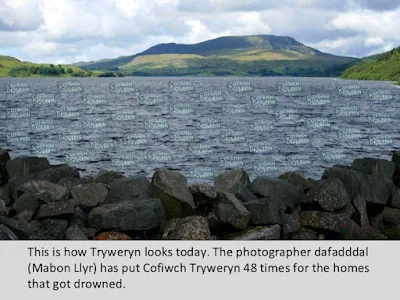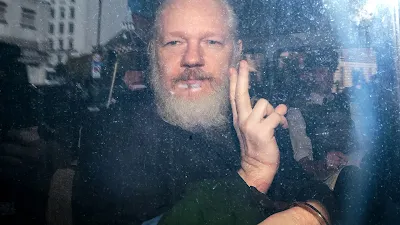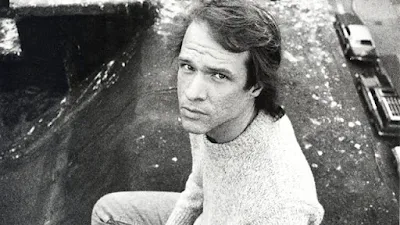On 17 April each year, Palestinian prisoners, the Palestinian people, and supporters of justice and liberation for Palestine all over the world express their support to Palestinian political prisoners and mark the International Day of Solidarity with Palestinian Prisoners.On this day, and throughout the year, families of prisoners often hold protests and vigils holding photos of their imprisoned family members to keep their stories alive.
Commemorated since 1974, when the first Palestinian prisoner, Mahmoud Hijazi, was freed in a prisoner exchange with the Palestinian Resistance, 17 April is a day of protests, rallies, marches, forums and more to commemorate the struggle of Palestinians imprisoned in Israeli occupation jails and demand their freedom.
In Palestine, political imprisonment is a central feature of Israeli Apartheid with over 20% of Palestinians facing imprisonment in their lifetime. Palestinian Prisoner Day was founded to remind the world of the thousands of Palestinian political prisoners imprisoned in Israeli prisons or detention centers without charge or trial for extensive periods of time. The number of Palestinian detainess increases as Israeli occupying forces continue to wage campaigns of arbitrary arrests, while Palestinian prisoners in Israeli jails continue to be subject to wide-ranging violations of their rights and dignity.Approximately 6,500 Palestinians are currently held in Israeli prisons and detention centers, including approximately 300 children and nearly 550 held under administrative detention, a form of detention without charge or trial that Israel uses to hold Palestinians indefinitely on secret information.
Since Israeli began its military occupation of the West Bank (including East Jerusalem) and the Gaza Strip in 1967, more than 800,000 Palestinians have been abducted and imprisoned by Israel. This figure represents 20% of the total Palestinian population and 40% of the Palestinian male population. It also includes 10,000 women imprisoned since 1967 and more than 200 Palestinians have died in Israeli prisons as a result of torture and lack of medical care.Furthermore, 8,000 Palestinian children have been arrested since 2000.Each year, some 700Palstinian children undergo military detention in a system where ill-treatment is widespread and institutionalised. For these young detiness, few rights are guaranteed even on paper. After release, the experience of detention continues to shape and mark former child prisoners path forward.
Palestinian prisoners held in Israel have recently called off a hunger strike that lasted a week after some of their demands were met by Israeli authorities, official Palestinian media and prisoner representatives said.Hundreds of inmates began refusing food on
April 8 after negotiations with prison authorities broke down.Commemorated since 1974, when the first Palestinian prisoner, Mahmoud Hijazi, was freed in a prisoner exchange with the Palestinian Resistance, 17 April is a day of protests, rallies, marches, forums and more to commemorate the struggle of Palestinians imprisoned in Israeli occupation jails and demand their freedom.
In Palestine, political imprisonment is a central feature of Israeli Apartheid with over 20% of Palestinians facing imprisonment in their lifetime. Palestinian Prisoner Day was founded to remind the world of the thousands of Palestinian political prisoners imprisoned in Israeli prisons or detention centers without charge or trial for extensive periods of time. The number of Palestinian detainess increases as Israeli occupying forces continue to wage campaigns of arbitrary arrests, while Palestinian prisoners in Israeli jails continue to be subject to wide-ranging violations of their rights and dignity.Approximately 6,500 Palestinians are currently held in Israeli prisons and detention centers, including approximately 300 children and nearly 550 held under administrative detention, a form of detention without charge or trial that Israel uses to hold Palestinians indefinitely on secret information.
Since Israeli began its military occupation of the West Bank (including East Jerusalem) and the Gaza Strip in 1967, more than 800,000 Palestinians have been abducted and imprisoned by Israel. This figure represents 20% of the total Palestinian population and 40% of the Palestinian male population. It also includes 10,000 women imprisoned since 1967 and more than 200 Palestinians have died in Israeli prisons as a result of torture and lack of medical care.Furthermore, 8,000 Palestinian children have been arrested since 2000.Each year, some 700Palstinian children undergo military detention in a system where ill-treatment is widespread and institutionalised. For these young detiness, few rights are guaranteed even on paper. After release, the experience of detention continues to shape and mark former child prisoners path forward.
A statement from the Palestinian Prisoners' Club, a non-governmental organisation said an agreement had been reached to end the recent strike.There was no immediate reaction from the Israel Prison Service. Prisoners had a list of the demands and their strike was supported by all major Palestinian factions.Hamas, which rules Gaza, in particular has objected to new electronic jammers installed in some of the prisons, to block mobile phone reception. The Prisoners' Club said the Israeli side had agreed to stop the jammers.Official Palestinian news agency Wafa said it had been agreed that public phones would be installed in the prisons.
Despite the difficult conditions of their detention, and against incredible odds, Palestinian political prisoners actively campaign for their individual and collective rights. In the absence of adequate judicial remedies, Palestinian prisoners and detainees regularly resort to hunger strikes as legitimate peaceful protest to highlight their plight.
Fears had been raised of a repeat of an 800-person hunger strike in 2017, which drew attention to prisoners' conditions.In 2017, 1,578 prisoners participated in the hunger strike overall. That protest lasted for 40 days until the Israelis conceded to one of the main demands of the prisoners. They agreed to two family visits a month for the prisoners instead of the one.
Palestinians, living under occupation and oppression, have been targeted for mass imprisonment and detention by the Israeli occupation, and nearly every Palestinian household has been impacted by political imprisonment.Investigations have revealed that prisoners are regularly ill-treated, tortured, and denied family visits subject to cruel, inhuman or degrading treatment, including poor detention conditions and denied family visits, not forgetting the policy of administrative detention as a method of arbitrary detention, which results in the jailing of people without trial, on the basis of confidential evidence and without providing a reason and justification for the detainees and their attorneys. These practices contravene fundamental standards of justice and represent Israel’s blatant disregard and violation of international conventions and norms anchored in international humanitarian law and international human rights conventions. in violation of Israel's obligations under international human rights and humanitarian law.
Under international law and conventions, including the Geneva Convention relative to the Treatment of Prisoners of War (the Third Geneva Convention), the Fourth Geneva Convention obliges Israel, as an occupying power, to provide allowances for Palestinian detainees, as enshrined in Articles 98 and 81 of the Fourth Geneva Convention. Israel does not honor this obligation. Instead, Israel is punishing the Palestinian government for providing allowances to the families of Palestinian prisoners by pirating Palestinian tax revenues.
Every day, Palestinian prisoners are on the front lines of struggle, facing relentless attacks on their rights , despite their difficult circumstances, the Palestinian eople and the prisoners are still full of hope that their days of freedom will come.
All of the above are reasons why I continue to support the Palestinian prisoners, and continue to support the international communities efforts to ensure the immediate and effective measures to ensure that Israel releases all unlawfully detaned prisoners, and ensures that conditions of arrest are consistent with international human rights and humanitarian law.
Palestinian Prisoners’ Day is also a time where we must reaffirm that there is nothing normal about occupation, apartheid, and mass incarcernation, in any context, and .to continue to stand against state and corporate complicity with Israeli imprisonment of Palestinian political prisoners.and an end of Israel's arrest campaigns, aggressiveness and occupation of the Palestnian territories.
The following link offers the latest facts, figures, and statistics about Palestinian prisoners.
http://www.addameer.org/statistics
























